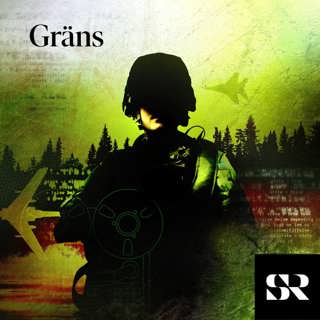
The Sunday Read: 'How Climate Migration Will Reshape America'
In August, Abrahm Lustgarten, who reports on climate, watched fires burn just 12 miles from his home in Marin County, Calif.For two years, he had been studying the impact of the changing climate on global migration and recently turned some of his attention to the domestic situation.Suddenly, with fires raging so close to home, he had to ask himself the question he had been asking other people: Was it time to move?This week on The Sunday Read, Abrahm explores a nation on the cusp of transformation.This story was written by Abrahm Lustgarten and recorded by Audm. To hear more audio stories from publishers like The New York Times, download Audm for iPhone or Android. Subscribe today at nytimes.com/podcasts or on Apple Podcasts and Spotify. You can also subscribe via your favorite podcast app here https://www.nytimes.com/activate-access/audio?source=podcatcher. For more podcasts and narrated articles, download The New York Times app at nytimes.com/app.
27 Sep 202044min

The Field: Policing and Power in Minneapolis
This episode contains strong language. In June, weeks after George Floyd was killed by the police, a veto-proof majority of the Minneapolis City Council expressed support for dismantling the city’s police department.The councilors’ pledges to “abolish,” “dismantle” and “end policing as we know it” changed the local and national conversation about the police.President Trump has wielded this decision and law-and-order arguments in his campaigning — Midwestern states like Wisconsin, Michigan and Minnesota may be decisive in the general election.He has claimed that Joseph R. Biden Jr. wants to defund the police — which he does not — and told voters that they would not be safe in “Biden’s America.”On the ground in Minneapolis, Astead Herndon, a national politics reporter, speaks to activists, residents and local politicians about the complexities of trying to overhaul the city’s police.Guest: Astead W. Herndon, a national politics reporter for The New York Times, speaks to Black Visions Collective co-director, Miski Noor; Jordan Area Community Council executive director, Cathy Spann; and Minneapolis City Council president, Lisa Bender. For more information on today’s episode, visit nytimes.com/thedaily Background reading: Across America there have been calls from some activists and elected officials to defund, downsize or abolish police departments. What would efforts to defund or disband the police really mean?In the wake of George Floyd’s killing, some cities asked if the police are being asked to do jobs they were never intended to do. Budgets are being re-evaluated. Subscribe today at nytimes.com/podcasts or on Apple Podcasts and Spotify. You can also subscribe via your favorite podcast app here https://www.nytimes.com/activate-access/audio?source=podcatcher. For more podcasts and narrated articles, download The New York Times app at nytimes.com/app.
25 Sep 202040min

On the Ground in Louisville
This episode contains strong language.Breonna Taylor’s mother and her supporters had made their feelings clear: Nothing short of murder charges for all three officers involved in Ms. Taylor’s death would amount to justice.On Wednesday, one of the officers was indicted on a charge of “wanton endangerment.” No charges were brought against the two officers whose bullets actually struck Ms. Taylor.In response, protesters have again taken to the streets to demand justice for the 26-year-old who was killed in her apartment in March.We speak to our correspondent Rukmini Callimachi, who is on the ground in Louisville, Ky., about the reaction to the grand jury’s decision.Guest: Rukmini Callimachi, a correspondent for The New York Times. For more information on today’s episode, visit nytimes.com/thedaily Background reading: A former Louisville police detective has been charged with “reckless endangerment” for his role in the killing of Breonna Taylor. Protesters poured into the streets, and two officers were shot in Louisville after the announcement. The city’s police chief said that neither of the officers’ injuries were life-threatening.A Times investigation explores the events leading up to the shooting of Ms. Taylor and its consequences. Subscribe today at nytimes.com/podcasts or on Apple Podcasts and Spotify. You can also subscribe via your favorite podcast app here https://www.nytimes.com/activate-access/audio?source=podcatcher. For more podcasts and narrated articles, download The New York Times app at nytimes.com/app.
24 Sep 202023min

A Historic Opening for Anti-Abortion Activists
President Trump appears to be on course to give conservatives a sixth vote on the Supreme Court, after several Republican senators who were previously on the fence said they would support quickly installing a replacement for Justice Ruth Bader Ginsburg.In our interview today with Marjorie Dannenfelser, president of the anti-abortion Susan B. Anthony List, she says she senses a turning point. “No matter who you are, you feel the ground shaking underneath,” she said. “I’m feeling very optimistic for the mission that our organization launched 25 years ago.”In pursuit of that mission, the Susan B. Anthony List struck a partnership with Mr. Trump during the 2016 election. The group supported his campaign and provided organizational backup in battleground states in exchange for commitments that he would work to end abortion rights.Ms. Dannenfelser described the partnership as “prudential.”“Religious people use that term quite a lot because it acknowledges a hierarchy of goods and evils involved in any decision,” she said. “and your job is to figure out where the highest good is found.”Guest: Marjorie Dannenfelser, president of the Susan B. Anthony List.For more information on today’s episode, visit nytimes.com/thedaily Background reading: The transformation of groups like the Susan B. Anthony List from opponents of Mr. Trump early in the 2016 campaign into proud and unwavering backers of his presidency illustrates how intertwined the conservative movement has become with the president — and how much they need each other to survive politically.For months, abortion has been relegated to a back burner in the presidential campaign. The death of Justice Ginsburg and the battle to replace her has put the issue firmly back on the agenda. Subscribe today at nytimes.com/podcasts or on Apple Podcasts and Spotify. You can also subscribe via your favorite podcast app here https://www.nytimes.com/activate-access/audio?source=podcatcher. For more podcasts and narrated articles, download The New York Times app at nytimes.com/app.
23 Sep 202035min

Swing Voters and the Supreme Court Vacancy
This episode contains strong language and descriptions of sexual violence. The death of Justice Ruth Bader Ginsburg and the ensuing battle to fill her seat is set to dominate American politics in the lead up to the election. A poll conducted for The New York Times before Justice Ginsburg’s death found voters in the battleground states of Arizona, Maine and North Carolina placed greater trust in Joseph R. Biden Jr. than in President Trump to fill the next Supreme Court vacancy.Now that it’s longer a hypothetical scenario, what impact will the vacant seat have on the thinking of swing voters?We take a look at the polling and ask undecided voters whether the death of Justice Ginsburg and the president’s decision to nominate another justice have affected their voting intention.Guest: Nate Cohn, a domestic correspondent for The Upshot at The New York Times. For more information on today’s episode, visit nytimes.com/thedaily Background reading: In surveys before Justice Ginsburg’s death, Joe Biden led by a slightly wider margin on choosing the next justice than he did over all against President Trump. Subscribe today at nytimes.com/podcasts or on Apple Podcasts and Spotify. You can also subscribe via your favorite podcast app here https://www.nytimes.com/activate-access/audio?source=podcatcher. For more podcasts and narrated articles, download The New York Times app at nytimes.com/app.
22 Sep 202031min

Part 1: The Life of Ruth Bader Ginsburg
When Ruth Bader Ginsburg graduated from law school, she received no job offers from New York law firms, despite being an outstanding student. She spent two years clerking for a federal district judge, who agreed to hire her only after persuasion, and was rejected for a role working with Justice Felix Frankfurter because she was a woman.With her career apparently stuttering in the male-dominated legal world, she returned to Columbia University to work on a law project that required her to spend time in Sweden. There, she encountered a more egalitarian society. She also came across a magazine article in which a Swedish feminist said that men and women had one main role: being people. That sentiment would become her organizing principle.In the first of two episodes on the life of Justice Ginsburg, we chart her journey from her formative years to her late-life stardom on the Supreme Court. Guest: Linda Greenhouse, who writes about the Supreme Court for The New York Times. For more information on today’s episode, visit nytimes.com/thedaily Background reading: Ruth Bader Ginsburg died in her home in Washington on Friday. She was 87. The second woman appointed to the Supreme Court, Justice Ginsburg’s pointed and powerful dissenting opinions made her a cultural icon.“Ruth Bader Ginsburg’s life and landmark opinions moved us closer to a more perfect union,” former President Bill Clinton, who nominated her for the court, wrote on Twitter. Other tributes have poured in from leaders on all sides of the political spectrum. Subscribe today at nytimes.com/podcasts or on Apple Podcasts and Spotify. You can also subscribe via your favorite podcast app here https://www.nytimes.com/activate-access/audio?source=podcatcher. For more podcasts and narrated articles, download The New York Times app at nytimes.com/app.
21 Sep 202038min

Part 2: The Battle Over Her Seat
In the second episode of a two-part special, we consider the ramifications of Justice Ginsburg’s death and the struggle over how, and when, to replace her on the bench.The stakes are high: If President Trump is able to name another member of the Supreme Court, he would be the first president since Ronald Reagan to appoint three justices, tipping the institution in a much more conservative direction.Guest: Julie Hirschfeld Davis, a congressional editor for The New York Times. For more information on today’s episode, visit nytimes.com/thedaily Background reading: President Trump’s determination to confirm a replacement before the election set lawmakers in Congress on a collision course. Subscribe today at nytimes.com/podcasts or on Apple Podcasts and Spotify. You can also subscribe via your favorite podcast app here https://www.nytimes.com/activate-access/audio?source=podcatcher. For more podcasts and narrated articles, download The New York Times app at nytimes.com/app.
21 Sep 202029min

The Sunday Read: 'The Agency'
According to Ludmila Savchuk, a former employee, every day at the Internet Research Agency was essentially the same.From an office complex in the Primorsky District of St. Petersburg, employees logged on to the internet via a proxy service and set about flooding Russia’s popular social networking sites with opinions handed to them by their bosses.The shadowy organization, which according to one employee filled 40 rooms, industrialized the art of “trolling.”On this week’s Sunday Read, Adrien Chen reports on trolling and the agency, and, eventually, becomes a victim of Russian misinformation himself.This story was written by Adrian Chen and recorded by Audm. To hear more audio stories from publishers like The New York Times, download Audm for iPhone or Android. Subscribe today at nytimes.com/podcasts or on Apple Podcasts and Spotify. You can also subscribe via your favorite podcast app here https://www.nytimes.com/activate-access/audio?source=podcatcher. For more podcasts and narrated articles, download The New York Times app at nytimes.com/app.
20 Sep 20201h 1min






















